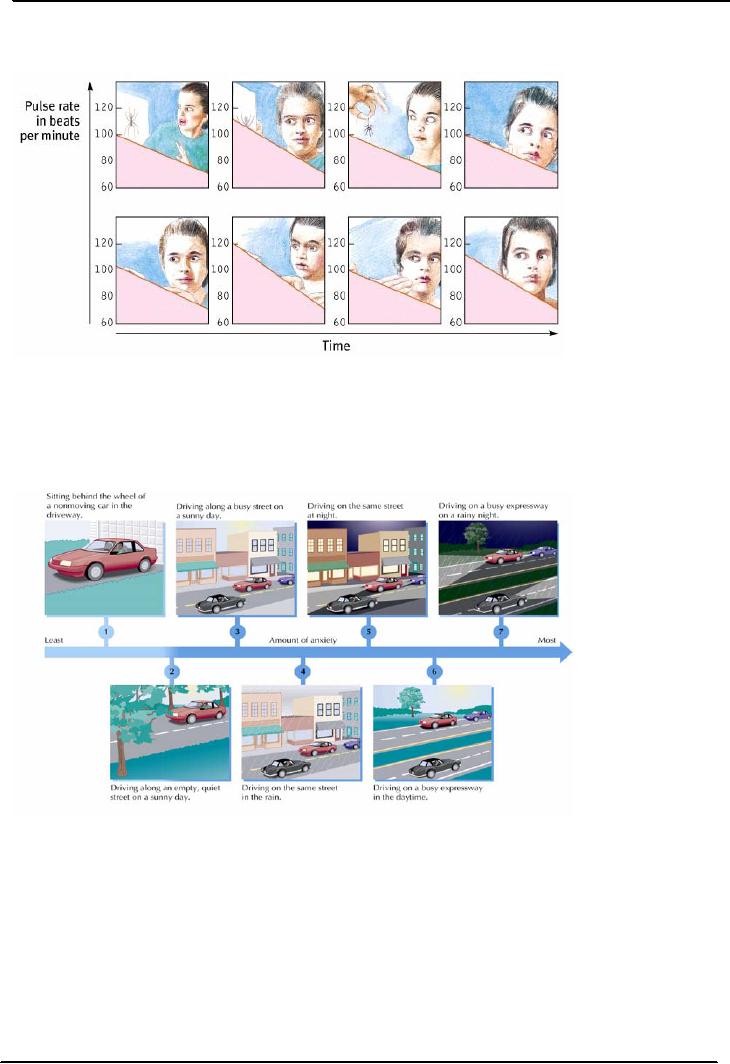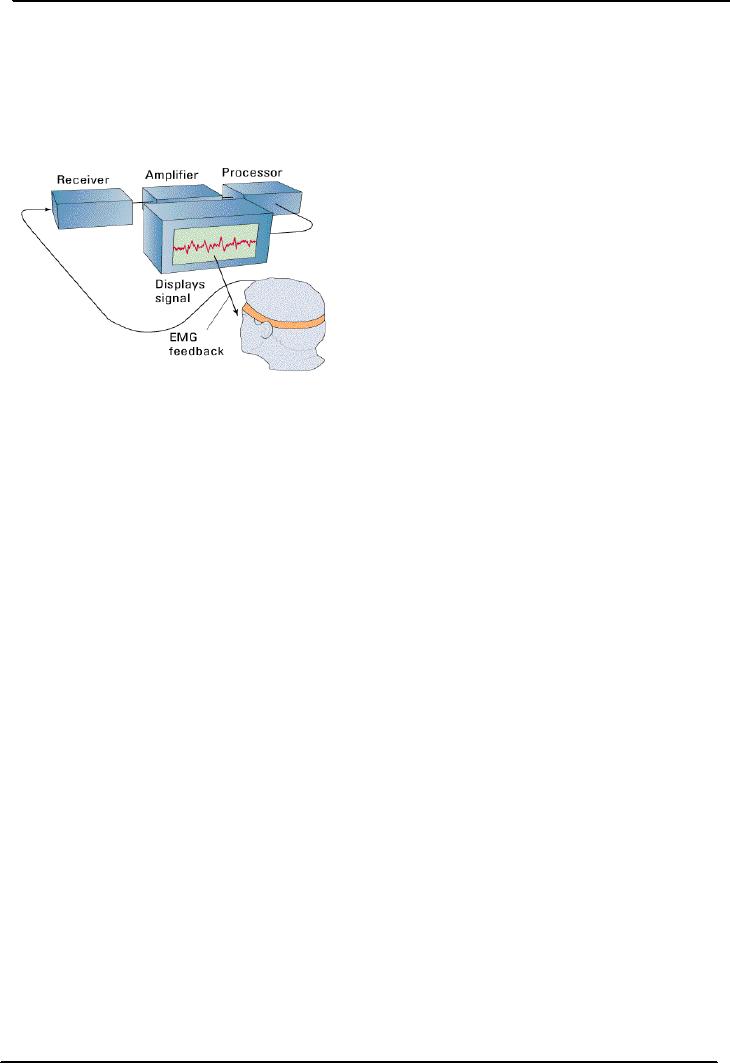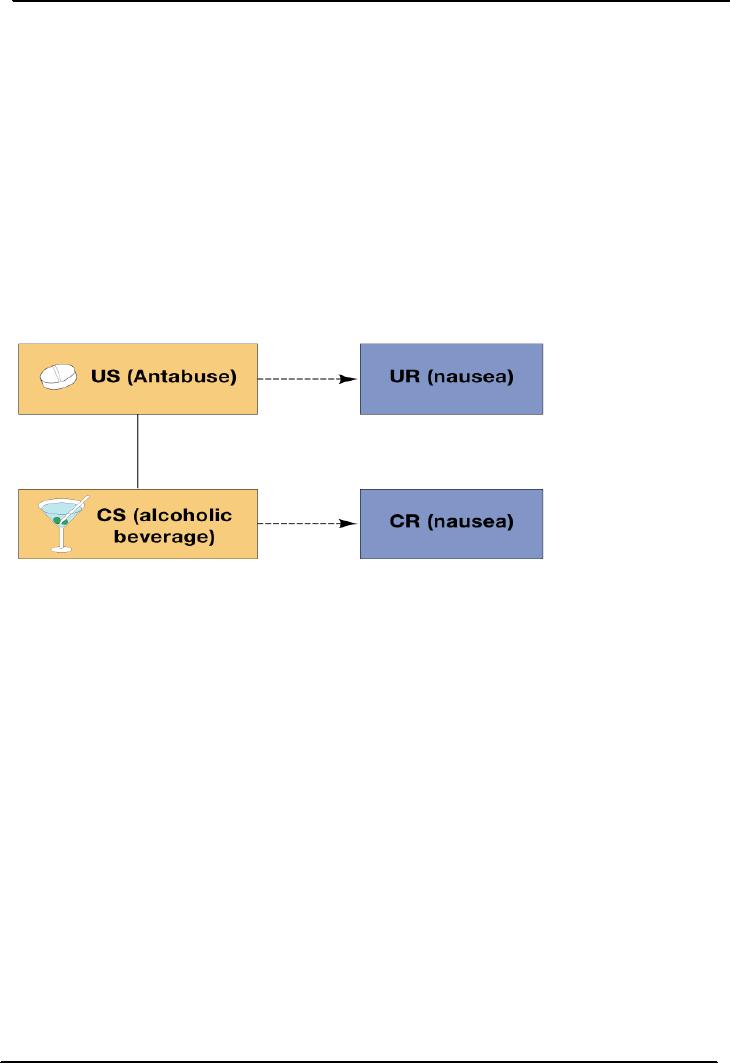 |
BEHAVIORAL APPROACHES:Use of reinforcers, Maintenance, Extinction |
| << BEHAVIORAL APPROACHES:Respondent Learning, Social Learning Theory |
| REALITY THERAPY:Role of the Counselor, Strengths, Limitations >> |

Theory
and Practice of Counseling -
PSY632
VU
Lesson
36
BEHAVIORAL
APPROACHES
Techniques:
General Behavioral Techniques
The
general behavioral techniques are
based on skinner's operant
conditioning.
∑
Use
of reinforcers:
Positive
and negative
reinforcers:
o
Positive
Reinforcement: behaviors followed by
pleasant stimuli are
strengthened; one of the
main
uses of positive reinforcement is the
token economy, used often in
institutional settings.
Positive
reinforcements used in everyday
life are social recognition,
money, and food.
Negative
Reinforcement: positive behavior is
increased to remove/ avoid
aversive stimuli.
Primary
and secondary reinforcers
o
Primary
reinforcer is valued intrinsically,
such as food, while
secondary is one the value
of
which
is associated with a primary reinforcer
like tokens exchangeable for
food, or social
recognition,
etc.
∑
Schedules
of reinforcement: Reinforcement
can be regular or irregular. Similarly,
reinforcement
can
be after some time or after particular number of
responses. The following are
different forms
of
reinforcements:
Ratio
o
Fixed
and variable ratio
Interval
o
Fixed
and variable interval
∑
Shaping:
Behavior
can be shaped and learned
using method of successive
approximations, breaking
o
the
target behavior into
manageable units. Reward is a series of
responses that approximate
the
final response. It is accomplished
through actual practice or
focused imagery.
Another
term
used is chaining which refers to the
specific response sequence - what
follows what
and
how?
∑
Generalization:
Display
of behaviors in environments outside
where they were originally
learned. It
o
includes
1. Home work assignments and
2. Training significant others.
∑
Maintenance:
o
Defined
as being consistent in doing the actions
desired without depending on anyone
else
for
support. Emphasis is placed
on:
Increasing
a client's self-control and
self-management.
Self-monitoring
through self observation and recording,
e.g., self-monitoring to
manage
weight gain, and monitoring
calorie intake.
∑
Extinction:
Elimination
of a behavior because of a withdrawal of
its reinforcement
o
∑
Punishment:
Presentation
of an aversive stimulus to a situation in
order to suppress or eliminate an
o
undesirable
behavior. The behaviors that
terminate a negative stimulus are
strengthened;
the
use of punishment is effective in eliminating
inappropriate or dangerous
behaviors,
such
as self-injurious behavior in autistic
children.
153

Theory
and Practice of Counseling -
PSY632
VU
Influence
of Behavioral Consequences on
Behavior
Target
Pleasurable
Stimulus
Aversive
Stimulus
Increase
rate/strength of Positive reinforcement
Negative
response
Reinforcement
Decrease
rate/strength of Extinction
Punishment
response
Specific
Behavioral Techniques
Behavioral
rehearsal/ social skills
training
It
was not a new concept,
used previously by Moreno (1947)
and Kelly's fixed role
therapy (1955).
o
Practicing
a desired behavior until it is
performed the way a client
wishes.
o
The
Technique has 4 steps
(Goldfield & Davison, 1994):
o
Prepare
the patient
o
Selection
of target situation
o
A
hierarchy of role playing:
o
Through
shaping and positive reinforcement,
client gradually improves social
skills.
o
Actual
behavioral rehearsal: Therapist and
client practice difficult
social interactions, for
o
example,
job interviews, asking for a
favour, saying `NO'. Clients
learn to be more
outgoing
or assertive in social
settings.
Systematic
Desensitization
∑
Mary
Cover Jones (1924) is a pioneer in paired
association. Pairing gradual exposure to
an anxiety-
provoking
situation with relaxation is the idea
provided by reciprocal inhibition. Using
these
principles,
Mary Jones associated the fear-evoking
rabbit with pleasurable,
relaxed responses
associated
with eating.
∑
Joseph
Wolpe's (1958, 1982) refined
Jones technique and introduced
progressive relaxation. You
cannot
simultaneously be anxious and
relaxed; therefore if you can
repeatedly relax when
facing
anxiety-provoking
stimuli, you can eliminate anxiety.
Gradually is the key.
Progressive
relaxation:
A
relaxation response is repeatedly paired
with a stimulus that evokes
anxiety in the hope that the
o
anxiety
will be alleviated.
Client
relaxes while thinking about
increasingly more threatening images of
phobic object.
o
154

Theory
and Practice of Counseling -
PSY632
VU
Example1:
Systematic Desensitization
(Source:
Myers, Psychology, 7th Edition)
Example
2: Systematic Desensitization
(Source:
Huffman/ Vernoy/ Vernoy,
Psychology in Action, 5th Edition)
Implosion
& Flooding
∑
Implosive
technique first introduced by
Thomas Stamfl.
Desensitizing
a client by exposing to a situation
with dire
consequences.
o
∑
In
flooding anxiety producing scene/
situation does not have
dire consequences. Flooding
forces
persons
to confront fears.
155

Theory
and Practice of Counseling -
PSY632
VU
Biofeedback
& Tension Headaches
∑
Sensors
on the head detect muscle
activity.
∑
System
converts signal to visual
display.
∑
Patient
watches the display, tries to reduce
tension signal.
(Source:
Kassin, 2001)
∑
Assertiveness
training:
A
person shall be free to
express feelings. Techniques consist on
counter conditioning anxiety and
reinforcing
assertiveness. Assertiveness training
uses both operant conditioning
and modeling
principles.
∑
Contingency
contracts
It
refers to spelling out the behaviors to
be performed, changed, or discontinued. Usually it
is
performed
with children, and the contract is
written in a quasi-formal
document.
∑
Environmental
planning:
To
overcome anxiety in particular situations,
environmental planning is done. For
example, the
most
anxiety provoking situations may be
avoided if it does not create
any problem in
client's
adjustment
to normal life situations.
Aversive
Techniques
These
techniques are the reverse of
systematic desensitization. The
idea is to associate unpleasant
feelings
with
unwanted behavior
Examples:
Quit
biting fingernails by placing in nasty
tasting solution.
o
Show
a pedophile picture of a child while
delivering a shock.
o
These
techniques have negative
emotional effects. That is
why they are not very mch
recommended to
apply.
A few aversive techniques
are described below:
156

Theory
and Practice of Counseling -
PSY632
VU
∑
Time-out
Separating
from the opportunity of
pleasure.
∑
Overcorrection
By
making something better than normal
∑
Covert
sensitization
An
undesirable behavior is eliminated by
associating with unpleasant
stimulus.
Aversive
Conditioning: classically conditioned
people react with aversion to alcohol,
etc.
Aversion
Therapy for
Alcoholism
The
procedure is straightforward classical
conditioning. Figure given below
illustrates the use of
aversive
approach
to treat alcoholism. Alcohol is paired
with a chemical that causes
nausea and vomiting.
(Source:
Davis & Palladino, 1997)
Cognitive
Behavioral Techniques
It
originated in 1970 and
1980s. Cognitive restructuring is done,
taught to identify self-defeating
o
thoughts.
An attempt is made to modify the way
one thinks.
Stress
Inoculation: It is a preventive technique
where coping skills are taught to
handle stress.
o
Three
stages are important for
stress inoculation:
∑
Understand
nature of stress and
coping
∑
Teaching
coping skills
∑
Practice
Thought
stopping: To progress from outside to
inner control; also teaches
to replace with
positive
o
thoughts.
157
Table of Contents:
- INTRODUCTION:Counseling Journals, Definitions of Counseling
- HISTORICAL BACKGROUND COUNSELING & PSYCHOTHERAPY
- HISTORICAL BACKGROUND 1900-1909:Frank Parson, Psychopathic Hospitals
- HISTORICAL BACKGROUND:Recent Trends in Counseling
- GOALS & ACTIVITIES GOALS OF COUNSELING:Facilitating Behavior Change
- ETHICAL & LEGAL ISSUES IN COUNSELING:Development of Codes
- ETHICAL & LEGAL ISSUES IN COUNSELING:Keeping Relationships Professional
- EFFECTIVE COUNSELOR:Personal Characteristics Model
- EFFECTIVE COUNSELOR:Humanism, People Orientation, Intellectual Curiosity
- EFFECTIVE COUNSELOR:Cultural Bias in Theory and Practice, Stress and Burnout
- COUNSELING SKILLS:Microskills, Body Language & Movement, Paralinguistics
- COUNSELING SKILLS COUNSELORíS NONVERBAL COMMUNICATION:Use of Space
- COUNSELING SKILLS HINTS TO MAINTAIN CONGRUENCE:
- LISTENING & UNDERSTANDING SKILLS:Barriers to an Accepting Attitude
- LISTENING & UNDERSTANDING SKILLS:Suggestive Questions,
- LISTENING & UNDERSTANDING SKILLS:Tips for Paraphrasing, Summarizing Skills
- INFLUENCING SKILLS:Basic Listening Sequence (BLS), Interpretation/ Reframing
- FOCUSING & CHALLENGING SKILLS:Focused and Selective Attention, Family focus
- COUNSELING PROCESS:Link to the Previous Lecture
- COUNSELING PROCESS:The Initial Session, Counselor-initiated, Advice Giving
- COUNSELING PROCESS:Transference & Counter-transference
- THEORY IN THE PRACTICE OF COUNSELING:Timing of Termination
- PSYCHOANALYTIC APPROACHES TO COUNSELING:View of Human Nature
- CLASSICAL PSYCHOANALYTIC APPROACH:Psychic Determination, Anxiety
- NEO-FREUDIANS:Strengths, Weaknesses, NEO-FREUDIANS, Family Constellation
- NEO-FREUDIANS:Task setting, Composition of Personality, The Shadow
- NEO-FREUDIANS:Ten Neurotic Needs, Modes of Experiencing
- CLIENT-CENTERED APPROACH:Background of his approach, Techniques
- GESTALT THERAPY:Fritz Perls, Causes of Human Difficulties
- GESTALT THERAPY:Role of the Counselor, Assessment
- EXISTENTIAL THERAPY:Rollo May, Role of Counselor, Logotherapy
- COGNITIVE APPROACHES TO COUNSELING:Stress-Inoculation Therapy
- COGNITIVE APPROACHES TO COUNSELING:Role of the Counselor
- TRANSACTIONAL ANALYSIS:Eric Berne, The child ego state, Transactional Analysis
- BEHAVIORAL APPROACHES:Respondent Learning, Social Learning Theory
- BEHAVIORAL APPROACHES:Use of reinforcers, Maintenance, Extinction
- REALITY THERAPY:Role of the Counselor, Strengths, Limitations
- GROUPS IN COUNSELING:Major benefits, Traditional & Historical Groups
- GROUPS IN COUNSELING:Humanistic Groups, Gestalt Groups
- MARRIAGE & FAMILY COUNSELING:Systems Theory, Postwar changes
- MARRIAGE & FAMILY COUNSELING:Concepts Related to Circular Causality
- CAREER COUNSELING:Situational Approaches, Decision Theory
- COMMUNITY COUNSELING & CONSULTING:Community Counseling
- DIAGNOSIS & ASSESSMENT:Assessment Techniques, Observation
- FINAL OVERVIEW:Ethical issues, Influencing skills, Counseling Approaches